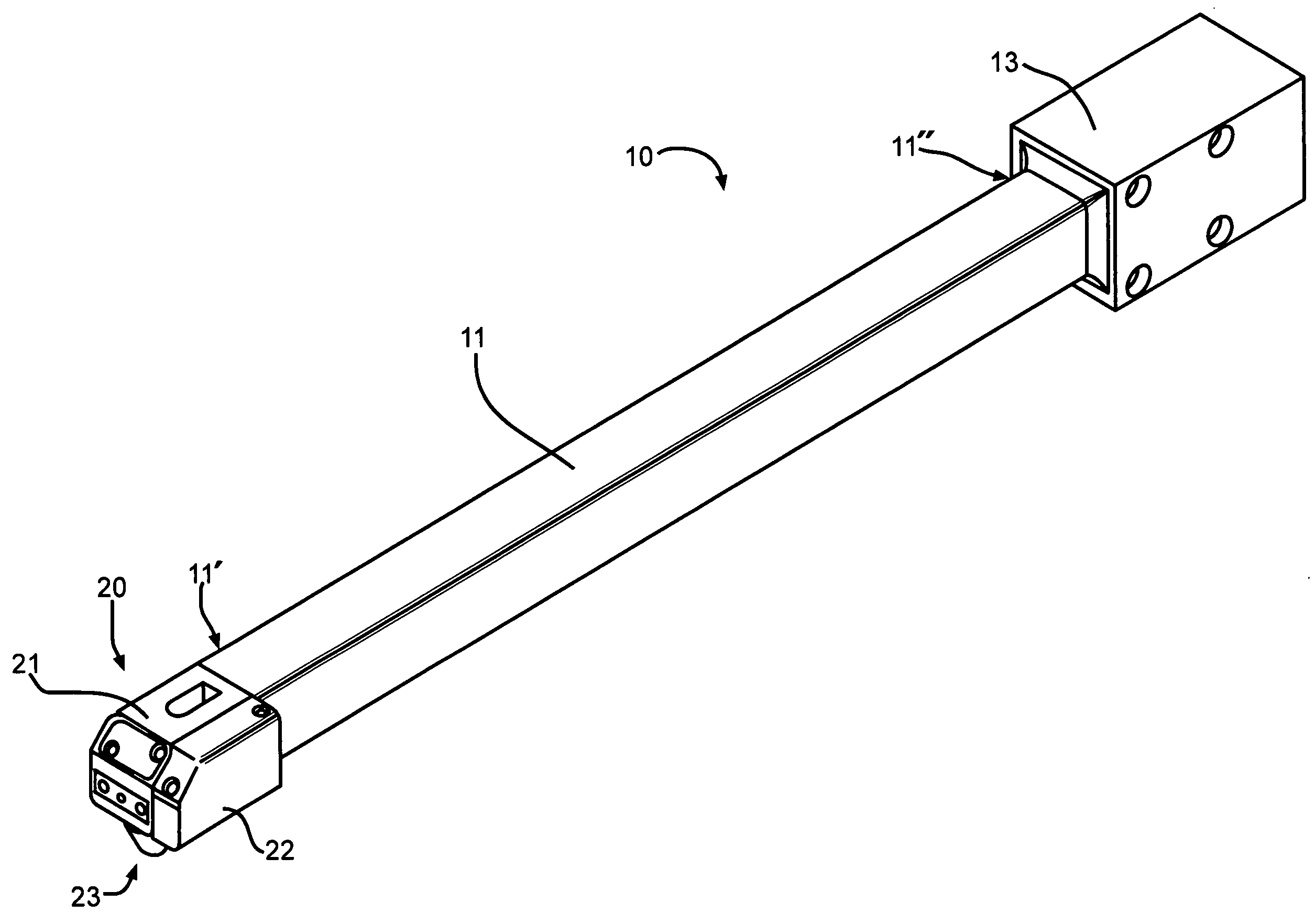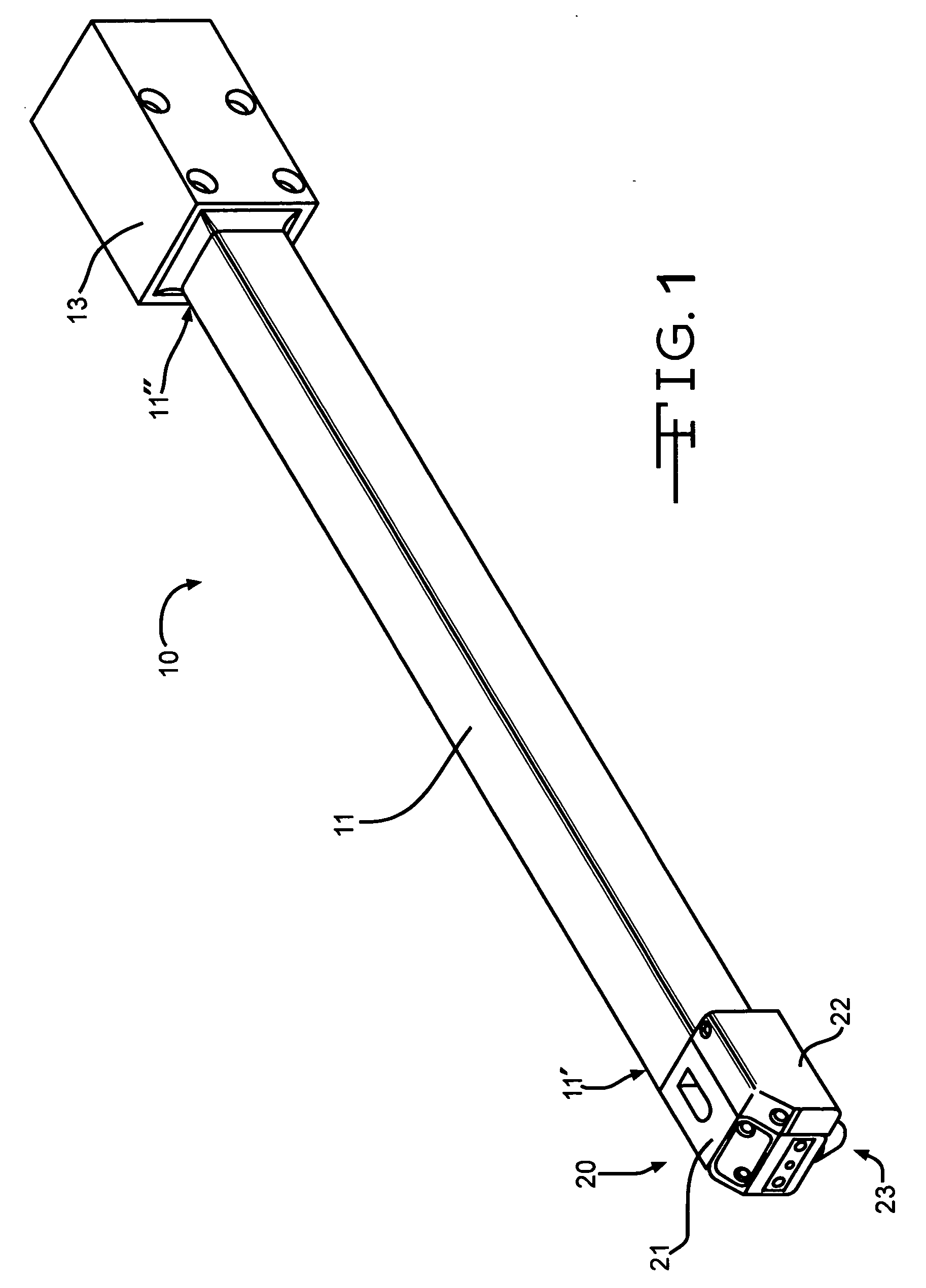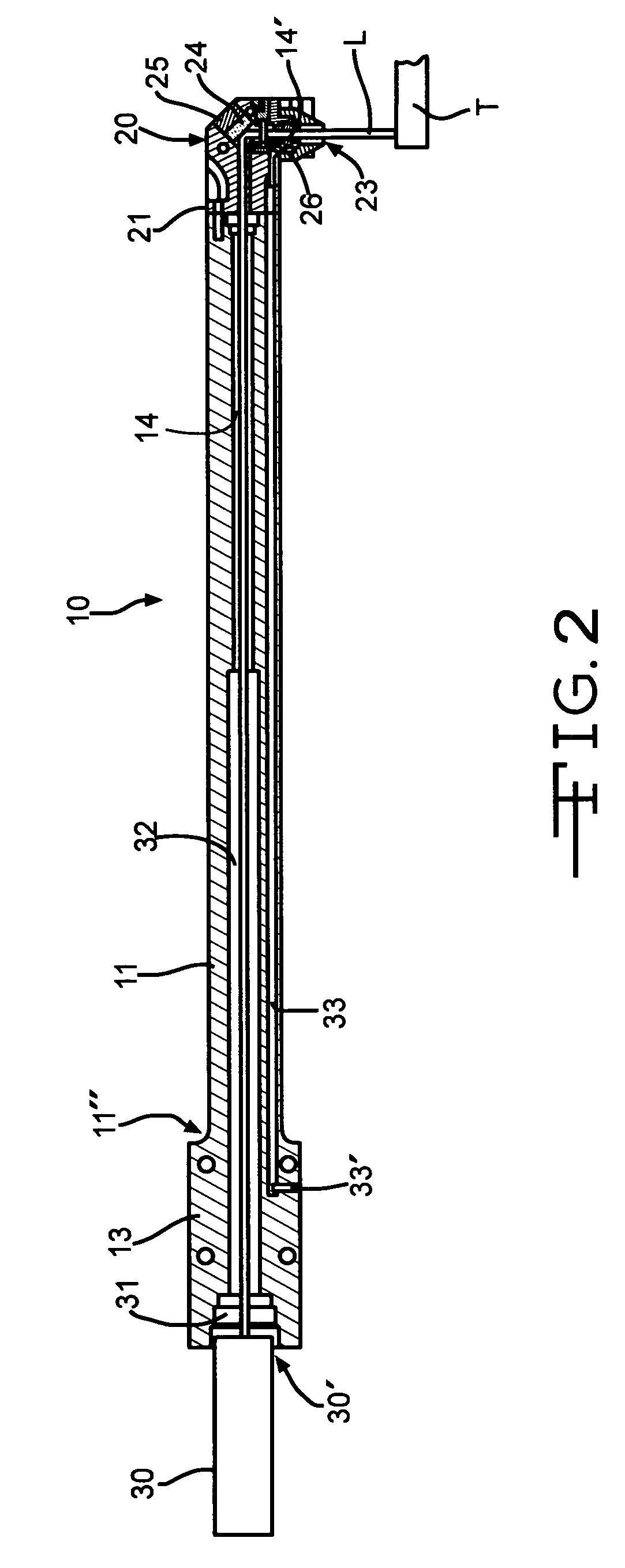Laser cladding of tubes
a technology of laser and tube, which is applied in the field of laser cladding of tubes, can solve the problems of not being able to coordinate with the activity provided by the laser end, difficulty in vertical introduction of powder, and known devices welding on constantly changing surfaces, etc., and achieves the effect of reducing dust and back spatter
- Summary
- Abstract
- Description
- Claims
- Application Information
AI Technical Summary
Benefits of technology
Problems solved by technology
Method used
Image
Examples
example
[0052]In an exemplary embodiment as shown in FIG. 10, apparatus 10 can be attached to either a robot arm or any Computer Numerical Control (CNC) machine represented schematically by box 100. Tube 90 is held in a chuck (not shown). The robot / CNC 100 is programmed to allow the cladding head 20 to travel inside the tube to the required spot X. Robot / CNC 100 is programmed to switch on the powder feeder for 15 seconds prior to laser start. This time lag allows the powder to reach a stable feed rate. The program turns ON the laser while simultaneously turning tube 90 (i.e., rotating the tube continuously). Tube 90 turns 180° while apparatus 10 remains at the same position. Apparatus 10 is then moved out of the tube along tube 90's longitudinal axis while tube 90 rotates. This creates a spiral cladding motion. The linear motion of apparatus 10 and the rotation of tube 90 are programmed so that the pitch remains constant. For example: To obtain 2 mm pitch, the head has to move linearly by 2...
PUM
| Property | Measurement | Unit |
|---|---|---|
| operating temperature | aaaaa | aaaaa |
| operating temperature | aaaaa | aaaaa |
| thickness | aaaaa | aaaaa |
Abstract
Description
Claims
Application Information
 Login to View More
Login to View More - R&D
- Intellectual Property
- Life Sciences
- Materials
- Tech Scout
- Unparalleled Data Quality
- Higher Quality Content
- 60% Fewer Hallucinations
Browse by: Latest US Patents, China's latest patents, Technical Efficacy Thesaurus, Application Domain, Technology Topic, Popular Technical Reports.
© 2025 PatSnap. All rights reserved.Legal|Privacy policy|Modern Slavery Act Transparency Statement|Sitemap|About US| Contact US: help@patsnap.com



